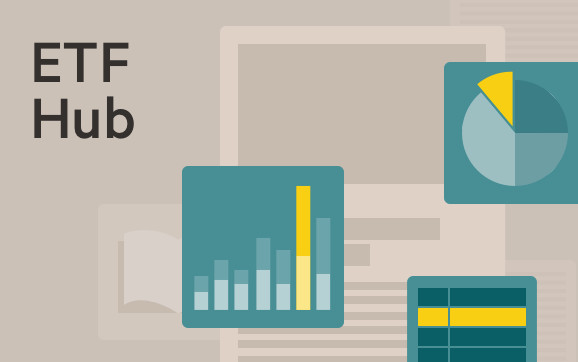Passive dividend equity funds underperform active rivals

Simply sign up to the Exchange traded funds myFT Digest -- delivered directly to your inbox.
Latest news on ETFs
Visit our ETF Hub to find out more and to explore our in-depth data and comparison tools
Passive index-tracking equity income funds have “consistently” underperformed their actively managed rivals over the past decade, research from Morningstar has shown.
The findings are highly unusual in that the vast majority of active funds typically deliver worse returns than cheap passive alternatives over meaningful periods of time, at least after their higher fees have been taken into account.
“Active managers in the global equity income category consistently outperform their passive counterparts, demonstrating a clear advantage,” said Monika Calay, director of passive strategies research for the Emea region at Morningstar.
However, the research found that the divergence in performance was largely due to passive funds’ heavier emphasis on small cap and value stocks.
The analysis is based on global equity income exchange traded funds and mutual funds domiciled across Europe, Africa and Asia, a €123bn sector after record inflows of €19.9bn in 2022.
The first passive fund, the Xtrackers Stoxx Global Dividend 100 Swap ETF, launched in 2007. Following “significant growth over the past decade” — culminating in sucking up 21 per cent of net flows to all equity income funds during the past 18 months — there are now 19 index-tracking funds in the sector with combined assets of more than €10bn.

However, they have proved something of a damp squib. During the year to June they returned just 6.4 per cent on an asset-weighted basis, well below the 11.2 per cent delivered by active funds, after fees.
They have similarly undershot over five years (an annualised 4 per cent vs 5.2 per cent) and 10 years (4.5 per cent vs 5.6 per cent), although they have done better over three years (10.7 per cent vs 9.4 per cent).
Over the past decade 61 per cent of the 118 active funds available in 2013 have both survived and outperformed the passive alternative: in most Morningstar categories this would be below 20 per cent.
Calay attributed these surprising figures to difference in positioning between active and passive funds.
Passive funds “typically favour higher yield, value and smaller sizes,” she said. “In a decade where value and small caps have underperformed compared to growth and large caps, this difference in strategy is pivotal.”
These differences stem from the very earliest passive equity income funds, which tracked the Stoxx Global Select Dividend 100 index.

This resulted in a narrow focus on maximising yield, Calay said, as well as a “heavy tilt towards value and also small size”.
In contrast, “actively managed dividend funds often avoid the highest-yielding stocks and instead combine yield with dividend growth to build a more robust and balanced portfolio,” Morningstar said, as active managers “not only assess the potential for dividend growth, but . . . examine the sustainability of dividends . . . [to] help avoid dividend cutters.”
This divide is clear in the data, with the median dividend yield of 3.58 per cent for active funds as of October, well below the 5.34 per cent of passive funds. Two ETFs even had double-digit yields.
Alan Miller, chief investment officer at SCM Direct, a London-based wealth manager focused on passive funds, believed this was a crucial point.
“I was surprised to see that active funds have outperformed passive but the reason can be seen in the dividend yield,” Miller said.
“Many of the active funds have significantly lower yields than the passives as the passive managers tend to play in the traditional value stocks whilst active managers seem to have a value/quality combination thereby producing lower yields.”
Peter Sleep, senior portfolio manager at 7 Investment Management, concurred.
“I have been critical in the past about [passive] dividend ETFs because many of them are, in my opinion, poorly constructed,” Sleep said.
“Many dividend ETFs look at historic dividends and do not try to anticipate whether a dividend is sustainable. This leads them to overweight stocks that may be on the verge of cutting their dividends like many of the resource stocks did in 2015 or in 2020. A very high dividend in excess of, say, 6 per cent, is often a red flag that a company is in distress or about to cut its dividend.”
Further, Morningstar said active funds have more flexibility and are “typically not required to sell immediately if a company cuts or cancels its dividend, which for an economically viable business is often the worst time to throw in the towel”.
Latest news on ETFs

Visit the ETF Hub to find out more and to explore our in-depth data and comparison tools helping you to understand everything from performance to ESG ratings
Calay cited the example of InterContinental Hotels Group which suspended its dividend during the Covid pandemic in March 2020. As a result many rules-based passive funds were forced to sell the stock at what proved to be its lowest point, while active managers had the freedom to hold on.
She said passive funds were now “evolving” and increasingly building forecast yields into their strategies, rather than just backward-looking ones. Others are adopting a tilt towards “quality” stocks, with stable earnings and a high return on equity.
Sleep was unconvinced about this approach however, noting that “value”, high dividend and small cap were factors that had been shown to work in the long term.
In contrast, quality “seems to have beaten everything else for years and is probably due one or two years of mean reversion”.
“A good way to underperform the market is to chase the last three-years’ outperformers,” Sleep said. “I am delighted if that is what Morningstar is promoting as it will give other people like me the chance to outperform.”
Comments